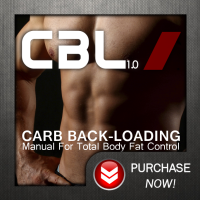By Scott Paltos
“Scott Paltos is a beast. He’s a former NFL player who owns an unbelievable training facility in New Jersey, and of all the CrossFit athletes who’ve approached me over the years, he’s the only one I’ve worked with for any length of time because he simply gets it. He’s strong as hell, he’s fast, he’s got endurance, he listens, and he’s also one of the best coaches around.” — Kiefer
Let’s get one thing straight right off the bat: I’m a CrossFit competitor. I am not, however, a main CrossFit site follower. I own a facility called PUMP CrossFit & Performance in East Hanover, NJ, and that’s how I got started with something a lot of you—including, perhaps, Kiefer himself—consider the enemy. Affiliating with CrossFit was a great way to get people in the door—where we’d be able to open them up to our way of training.
I’m 5’11”, and I weigh 240 pounds, so I’m not exactly the easiest visual sale for our programs. When prospective clients come into our facility, normal guys say, “He’s going to want me to get too big,” and women think, “I’m a girl. I don’t want to look like a man.” I made an intelligent business decision and added CrossFit to my place—but when it comes to getting results, the idea is to leave the dogma at the door.
The Carb Back-Loading Connection
I’m now going into my third competitive CrossFit season with Kiefer as my advisor. How’d we meet? Well, I hammered the guy with messages until he finally responded: “Scott, I hate CrossFit, but you intrigue me with your size and ability, so I’ll help you out.”
What’s interesting about this is that in a community that frowns on anything unrelated to Paleo, Kiefer’s methods are making a huge statement to a very distinct population of CrossFitters. With that said, however, so is the idea of building strength—or, just as importantly, not losing strength while consistently increasing metabolic ability with CrossFit’s metcon conditioning.
Since I’ve had the benefit of Kiefer’s guidance for most of my competitive career, his system has been a big part of my arsenal for pretty much everything I’ve been able to do. As my nutrition has changed, however, so has my training—and what I’ve found is that the two must function seamlessly together in order for you to experience success or make any progress at all. Anyone who thinks otherwise is a jackass. Training and nutrition need to coexist.
Don’t Let Your Weak Points Dominate
My background is in football, powerlifting, and strongman training. I’m not a gymnast. I want to train heavy and fast, and I hate long, drawn-out workouts. With CrossFit competitions, however, you can’t have weaknesses anywhere. Guess what, though? Unless you’re one of the top athletes in the game, you’re going to find something that floors you, so you have to work to improve your weaknesses—but at what cost? One thing I see way too many people doing wrong is working their weaknesses to such an extent that they begin to weaken their strengths—so what you need to strive for is the proper balance in your training so this doesn’t happen.
In my case, I’m 36 years old, and 70-80 pounds heavier than most of the athletes I’m competing against, so I need to play to my strength—and that’s strength itself. My technique is tight, and my engine is pretty good. I enjoy moving things, but I need to make sure my programming ensures I can still keep this as an advantage.
The Individualization of Horsepower
Here’s the point to all of this: If you want to keep your metabolic engine running on high without sacrificing strength or maximal output, add heavy loads and movements to your long-ass workouts. Here’s what I mean by this:
I’m a big fan of what I call potential percentages. This is similar to what Louie Simmons of Westside Barbell advocates on max effort days. It’s also related to the concept of relative maxes for that particular day. The trick to this is being aware of what your body has in the tank on any given day. Just because your workout is scheduled to have a 315 pound deadlift in it doesn’t mean that lift has to stay there—especially if you’re not in the right frame of mind (or body) once you’re in the gym.
I see too many people getting caught up in hitting their targeted percentages for each workout, forgetting about all the other stuff that life can throw in front of them. I have three-year-old twins and I own a business, so I have no idea what life is going to hand me today, tomorrow, or next week.
Still, you have to lift heavy loads in the midst of your chaotic, metabolic, heart-pumping work. They key here is coming to the realization that adjustments can be made to fit your training, again, on any particular day. Sure, you can complete the workout of the day (WOD) that’s directed, but it may need some variance to it to work at the metabolic level that’s required.
How To Do This
The good news here is that it’s not hard to figure out how to do this for yourself every day. Everything starts with your warm-up, when you wrap your hands around a barbell and feel how heavy your movements are. A few minutes in, maybe you rev it up—or then again, maybe you don’t. You dictate your level, and you dictate your load. You need to know when to ramp yourself up, and when to back yourself off—and if you’re a trainer or coach, you need to know when these things are appropriate for your clients or athletes. When pulling back is what’s best, that’s what you need to do—and you need to know what that feels like.
To put this into practice, I’m going to show you some of the programming I’ve used, both for myself and for my clients at PUMP. Some are of the typical CrossFit variety, and some aren’t. What they all have in common, however, is one outside-the-box theme: that of adding heavy loads into longer, metabolic conditioning workouts.
Example #1: 20 minute EMOM (every minute on the minute)
EMOM, perform 1 burpee and 3 power cleans. They don’t have to be touch-and-go (i.e., you can drop and reset). If your reps are clean and done easily, add weight at the 8 minute mark, and again at 16 minutes—adding a burpee at these points, too.
In the video, I’m doing the power cleans with 250, 275, and 300 pounds.
Example #2: Deadlift Simple Wave Ladder (lift every 20 seconds)
In this video, I’m doing the following:
WAVE ONE: 275 (axle), 315 (barbell), 365 (log), 405 (axle), 455 (barbell), then rest 3 minutes.
WAVE TWO: 315 (axle), 365 (barbell), 405 (log), 455 (axle), 505 (barbell), then rest 3 minutes.
WAVE THREE: 365 (axle), 405 (barbell), 455 (log), 505 (axle), 555 (barbell).
Example #3: CrossFit-esque WOD (25 minutes, AMRAP)
1. Lift stone from ground to shoulder, ascending with rounds (i.e., 1-2-3-4-5, etc)
2. Toes-to-bar: 7 reps
3. Box Jumps (24-30″): 10 reps
4. Kettlebell Snatch: 15 each arm (75 pound kettlebell used in video)
Example #4: Kiefer Meets Paltos (6 rounds, each for time, with your first set determining the length of your rest interval)
1. Clean and Jerk: 5 (225-275 used in video)
2. Pull-ups: 10 reps
3. Wall Balls: 15 reps
4. Row: 100 meters








Recent Comments